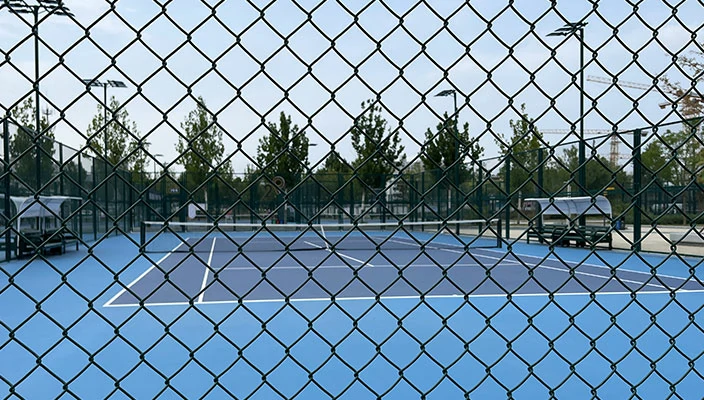Current Trends in Iron Wire Pricing and Market Analysis
The Dynamics of Iron Wire Prices Factors, Trends, and Future Outlook
Iron wire is a crucial material used across various industries, from construction to manufacturing and crafting. Understanding the factors influencing its price can help businesses and consumers make informed decisions. This article explores the dynamics of iron wire prices, examining key factors such as production costs, market demand, global economic influences, and future trends.
Production Costs
The production of iron wire primarily involves the transformation of iron ore into steel through a series of processes including smelting, rolling, and drawing. The cost of raw materials, particularly iron ore and steel scrap, significantly affects the price of iron wire. Fluctuations in the price of these raw materials are driven by global supply and demand dynamics. For example, any increase in the demand for steel in rapidly developing countries like China and India can lead to higher iron ore prices, which in turn raises the cost of producing iron wire.
Energy prices also play a critical role. The production of iron wire is energy-intensive, and changes in energy costs—whether from electricity, gas, or oil—can directly influence the overall manufacturing costs. For instance, during periods of increased global energy prices, manufacturers may pass these costs onto consumers in the form of higher iron wire prices.
Market Demand
The demand for iron wire is influenced by several sectors, including construction, automotive, agriculture, and even DIY crafts. The construction industry, being the largest consumer, significantly impacts iron wire pricing. As infrastructure projects ramp up or decline, the demand for iron wire changes accordingly. For instance, government spending on infrastructure can create surges in demand, leading to a corresponding increase in prices.
Similarly, technological advancements and shifts in consumer preferences can alter demand patterns. For example, the rise of sustainable construction practices may lead to an increased use of recycled materials, impacting the types of iron wire in demand and consequently its price.
Global Economic Influences
iron wire price

Global economic conditions are a major influencer of iron wire prices. Economic growth generally signals increased construction and manufacturing activities, driving up demand for iron wire. Conversely, economic downturns can lead to decreased demand and falling prices.
Trade policies and tariffs also play a significant role in pricing. For instance, the imposition of tariffs on imported steel and wire can lead to price increases domestically. Conversely, free trade agreements can enhance supply and lower prices. Additionally, geopolitical tensions that affect the supply chains of raw materials can lead to unpredictability in prices.
Market Trends
Looking at the trends over the past few years, there has been considerable volatility in the prices of iron wire. This volatility can be attributed to the ongoing effects of the COVID-19 pandemic, which disrupted supply chains and created uncertainty in demand across various sectors.
Furthermore, the increasing focus on sustainability has led to the rise of eco-friendly options in the market, such as wire made from recycled materials. This shift, while potentially benefiting the environment, can also lead to price adjustments as manufacturers adapt to new technologies and consumer expectations.
Future Outlook
As we look to the future, several key indicators will shape the trajectory of iron wire prices. The continued recovery from the pandemic, coupled with the ongoing demand for infrastructure development in emerging economies, is likely to sustain high levels of demand for iron wire.
Technological advancements in production processes could lead to efficiencies that could stabilize prices, but this will depend on the pace of innovation and adoption within the industry. Moreover, the wider shift toward sustainability may open new markets and opportunities that could influence pricing structures.
In conclusion, the price of iron wire is subject to a variety of factors that can be both predictable and volatile. Understanding these dynamics is crucial for stakeholders in the industry to navigate the complexities of pricing effectively. Keeping an eye on macroeconomic indicators, trade policies, and technological advancements will be essential for forecasting future price movements in the iron wire market. Ultimately, as industries evolve and adapt, the landscape for iron wire pricing will continue to change, presenting both challenges and opportunities for businesses and consumers alike.
-
Space-Saving Chain Fence Hacks Vertical Gardening with Cyclone MeshNewsJul.16,2025
-
Innovations in Iron Nail Wire Production for Modern ConstructionNewsJul.16,2025
-
Creative Uses of Wire Netting Fence in Modern Landscape DesignNewsJul.16,2025
-
Barbed Wire Fence Innovations in Anti-Climb TechnologyNewsJul.16,2025
-
Architectural Uses of Umbrella Nails for Aesthetic Roof DesignsNewsJul.16,2025
-
Architectural Uses of Razor Barbed Wire in Secure Urban DesignNewsJul.16,2025




